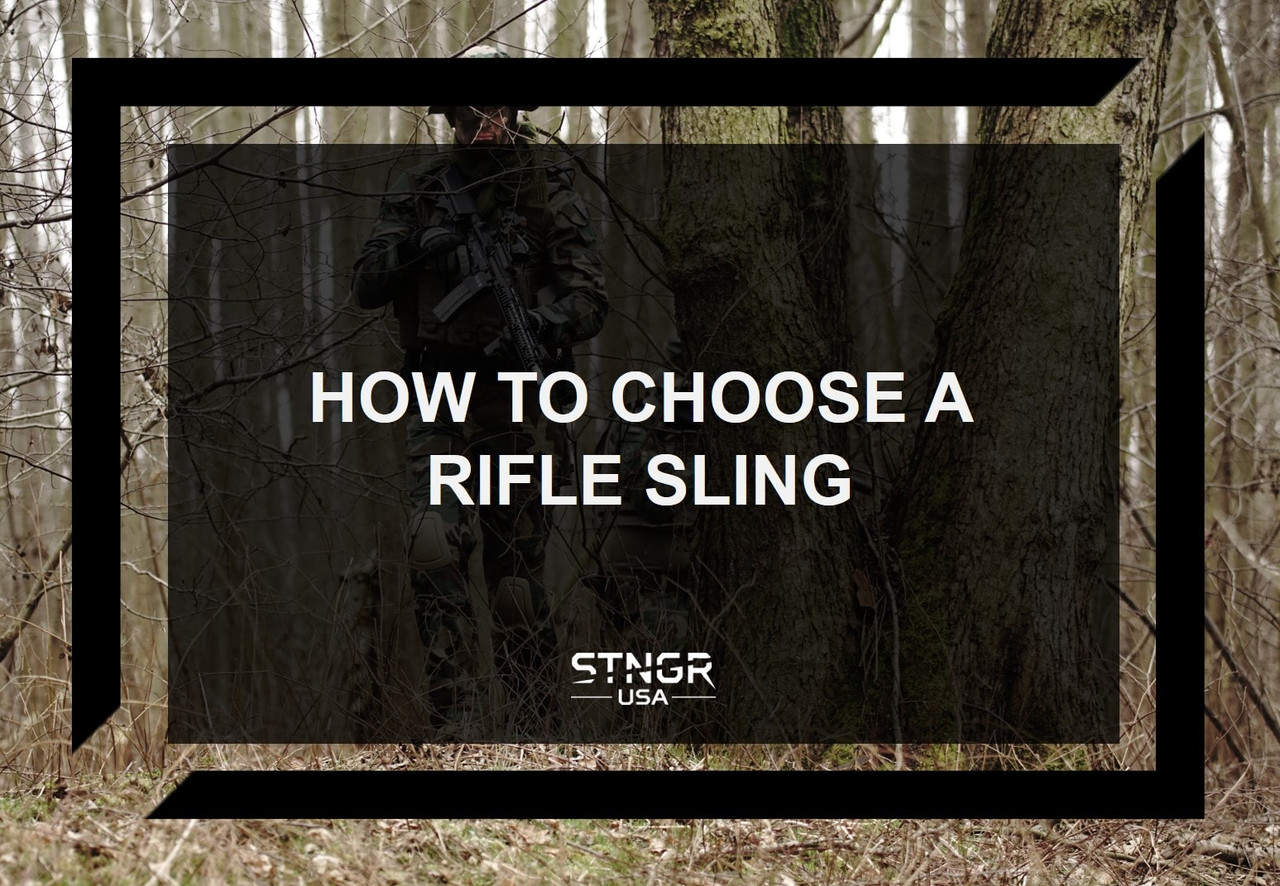How to Choose a Rifle Sling
Posted by STNGR USA on Jul 31st 2019
Rifle slings are one of the most valuable accessories you can purchase. If you tend to take your rifle to do rifle things beyond a simple gun range, you should have a sling. A rifle sling is a strip of material or fabric designed to connect your weapon and connect your weapon to you. A sling makes carrying your rifle more comfortable over long periods of time. It also makes it possible for you to use both hands while maintaining control over your rifle. A sling also ensures you retain your rifle. Imagine for a moment hiking up a ridge carrying your rifle and slipping. Maybe you slide, slip, and fall. With a sling, your rifle is being retained and you don't have to worry about losing it.
How to Choose a Rifle Sling
Slings are a must have when it comes to utilizing your rifle in any role beyond target practice. They are required pieces of gear for defensive rifle classes as well as being issued to any serviceman or woman carrying a rifle. There are a few different kinds of slings out there and they all have their strengths and weaknesses. Today we’ll cover the basics of what you need to know about the different kinds of slings.
Single Point Slings
Credit: Tactical Gear Hut
Single point slings mean there is a single point of contact on the weapon. These slings are a simple loop with an attachment device sticking off the side. These are very simple slings that go over one shoulder and then under the opposite arm.
Single Point Slings are lightweight and compact. They are best used with small weapons like AR pistols and shorter carbines. They do not provide support for heavier weapons or full-length rifles. They tend to sag and drop with heavier weapons.
These slings are great for when wearing body armor and moving in tactical environments. They allow unrestricted movement of your muzzle. The downside is that when you release the weapon to use your hands it tends to hang and bang.
Two Point Slings
Two-point slings have come and gone throughout time. Technology has improved and so has the two-point sling. Two Points are the current favorite for military forces and they’ve long been a favorite of hunters across the county. Two-point slings attach to two points on a weapon, most often somewhere near the stock and somewhere near the end of the handguard.
These slings provide excellent support for all rifles and AR pistols. They are often incredibly comfortable and allow for the sling to bear some of the weapon's weight over long movements. Modern two points often have a device that allows for quick tightening and loosening of the sling. When tightened the sling supports the rifle and allows the user to utilize their hands without the weapon hanging loosely.
When loosened the sling allows for more freedom of movement and better rifle manipulation. There are some limits to the sling when it comes to tactical shooting, and they are often removed when shooting in urban environments and close quarters to improve mobility. Two-point slings like the Vickers sling are currently being issued by the United States Military.
Three-Point Slings
Credit: Specter Gear
Three-point slings are a combination of two-point slings and one-point slings. Like a two-point, they attach near the front and rear of the weapon. A separate slider then forms a loop outside of the two points which tightens around the body like a one point. It sounds and is complicated.
Three-point slings offer the most control possible for a rifle sling and are perfect for full-length AR rifles with 20 inches and beyond, or heavy AR 10 style rifles. If you have to use your hands the rifle itself will be well supported. The sling does allow for good maneuverability, but nowhere near as much as a single point.
The biggest downside to three points and what has made them rare these days is their tendency to wrap around the gear you are wearing and using, as well as blocking important controls on your rifle. They are overly bulky and in the face of the modern tactical two-point, they are long outdated and honestly tough to find these days.
Slung Up
Slings are a must-have a for a rifle. If you ever plan to hunt, train with, or use your rifle outside of a simple square range you need to have a sling. It will make your life and mission easier. Of course, also purchase a quality sling from a reputable company like Blue Force gear, Viking Tactical, Specter, etc. The type of sling matters, and the quality of the sling matters just as much. When it comes to rifles it's never wise to skimp on your gear regardless of what it is.


